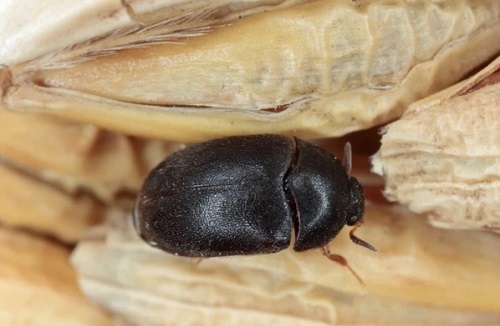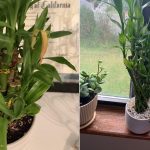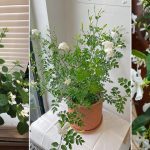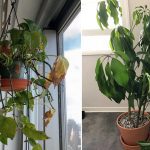Learn about these pesky Tiny Black Bugs that Look Like Poppy Seeds and some preventive measures to combat them!
While pests are an absolute nuisance, these Tiny Black Bugs that Look Like Poppy Seeds are even more troublesome as they are often hard to spot. Learn more about these pesky creatures and learn how to prevent their infestation!
Tiny Black Bugs That look Like Poppy Seeds
1. Carpet Beetles
Carpet beetles are small, oval-shaped insects with a dark brown or black color and distinct white, yellow, and orange scales on their wings.
They are notorious for eating natural fibers found in carpets, upholstery, and clothing, causing unsightly holes and patches. These Tiny Black Bugs that Look Like Poppy Seeds can easily hide around the corners and cause significant damage to your home furnishings.
2. Flea Beetles
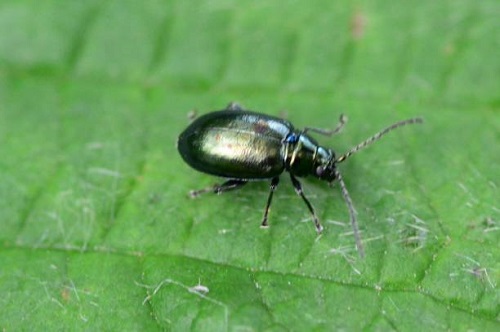
Flea beetles are small, shiny black beetles with enlarged hind legs, which allow them to jump when disturbed, and hence are difficult to control.
A gardener’s nightmare, the insects attack a wide range of plants, munching on leaves and creating small, round holes.
3. Spider Beetles
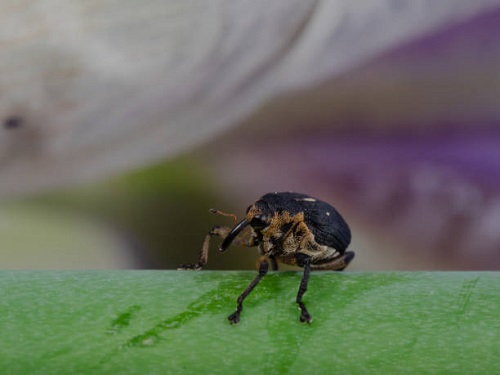
Spider beetles are small, shiny insects with oval-shaped bodies and long, thin legs resembling spider appendages. They typically range from 2 to 5 millimeters in length.
Spider beetles are a common pantry pest, causing damage to stored food products, especially fond of grains, cereals, and flour, making your kitchen cupboards their perfect home.
4. Psocids
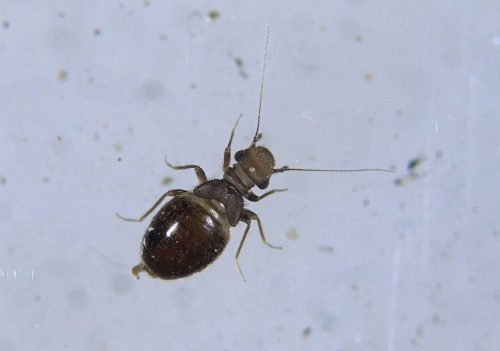
Psocids, also known as booklice, are tiny insects with soft body and a humpbacked appearance.
While their name might suggest otherwise, booklice are not the typical lice that you might imagine. However, they can cause a nuisance by infesting old books, wallpaper, and moldy foods, causing damage and potentially triggering allergies in people with sensitive health profiles.
5. Bird Mites
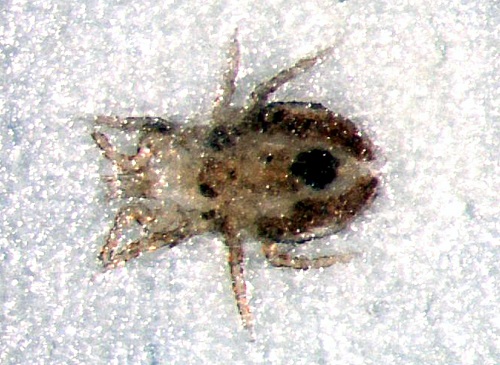
Bird mites are tiny arachnids with round body and a dark brown or black color.
Although they primarily feed on birds, bird mites can bite humans, causing itchy, red welts. They are often found in homes with nearby bird nests.
6. Black Pepper Mites
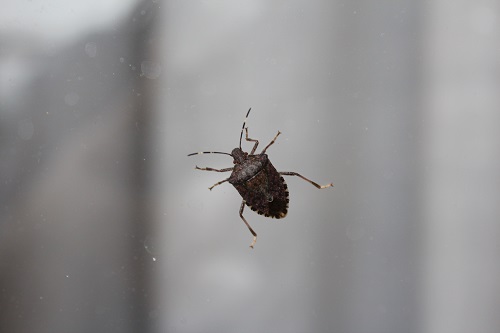
Black pepper mites, also known as mold mites, are extremely tiny, oval-shaped mites with black or brown color, resembling the minute poppy seeds.
These mites thrive in damp and moldy environments. They do not typically bite humans but can be problematic to people with cause allergic health profiles.
7. Grain Weevils

Grain weevils are small, black beetles with a distinctive elongated snout which are commonly found in stored grains. The larvae eat and grow inside the grain kernels, making them unfit for consumption.
8. Poppyseed Weevils
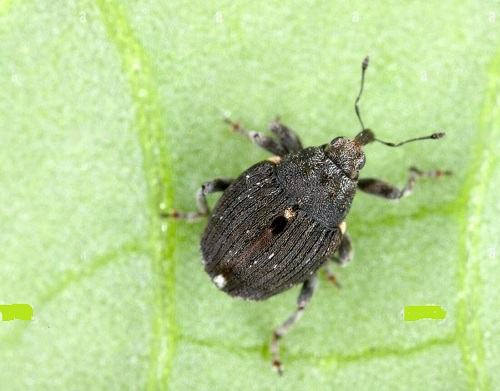
With a round black appearance, the Poppyseed weevils easily hide in a mound of poppy seeds and infest their quality.
The female weevils lay eggs inside the developing poppyseed capsules, and the larvae feed on the seeds. They are a particular concern for poppy farmers.
9. Bed Bugs

These nocturnal insects have a small, flat, oval-shaped body that can appear similar to a poppy seed in size and color. Their dark brown to reddish-brown color, akin to a poppy seed, can make them difficult to spot on certain surfaces.
Bed bugs feed on human blood, typically at night, and their bites can cause itching and allergic reactions.
10. Black Aphids

Aphids are tiny, ranging in size from 1 to 10 millimeters. Black aphids, as their name suggests, have a deep black coloration similar to that of poppy seeds. Their rounded, pear-shaped bodies might confuse you with tiny seeds when viewed from a distance.
Black aphids suck sap from plants and excrete a sticky substance called honeydew, which can lead to sooty mold. They can cause significant damage to ornamental plants and crops.
11. Ticks

Ticks are similar in size to poppy seeds, and when they are not engorged from feeding, they can easily be mistaken for one. They have a hard, rounded body that is typically black or dark brown.
Ticks can transmit Lyme disease to humans and pets, and hence are a health hazard. They are usually found in tall grass and wooded areas.
12. Moss Mites

Moss mites are extremely small, with a size of about 0.1-1 mm. They are typically dark in color, and their tiny, rounded bodies may confuse you with poppy seeds.
They are commonly found in soil, leaf litter, mosses, and compost piles, where they aid in the decomposition process. With a preference for damp and humid conditions., these bugs usually invade in areas like basements or bathrooms that tend to be moist.
13. Fleas

Fleas are small, about 1-3 mm, with a thin, flat body that is sideways expanded, making them look like tiny black dots. When they’re stationary, their size and dark brown to black color can make them resemble poppy seeds.
These bugs favor warm, humid environments and can often be found in pet bedding, carpets, upholstery, and cracks in floorboards. They can also infest wild animals and can be found in outdoor environments like gardens and yards, especially in sandy or shaded areas.
14. American Spider Beetles

These beetles have a rounded body and a color ranging from pale brown to black. Their size ranges from 1.5 to 3.5 mm, and when their long legs are folded, they can easily be mistaken for tiny seeds.
These bugs are commonly found in warehouses, food processing facilities, homes, and any place where they can access stored food products, particularly grains, cereals, flour, dried fruits, and even non-food items like tobacco.
15. Black Oriental Cockroaches
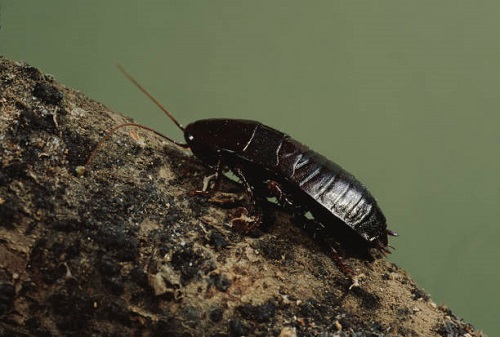
While mature black oriental cockroaches are quite large, their nymphs are small and dark, which could be mistaken as poppy seeds from a distance.
These Tiny Black Bugs that Look Like Poppy Seeds crawl into homes through small cracks and crevices and multiply quickly. They feed on decaying matter, trash, and even items such as toothpaste and books.
Preventive Measures of Bug Infestation
These Tiny Black Bugs that Look like Poppy Seeds can get troublesome with increased infestation and can lead to serious issues over time. While the specific methods may vary for each bug, the following tips can help address and prevent their proliferation:
- Maintain Cleanliness: First and foremost—regular cleaning is paramount in combating these pests. Vacuuming frequently, particularly in areas prone to infestation, can help eliminate eggs, larvae, and adult bugs. Regularly vacuum and sweep the floors, wipe down surfaces, and eliminate any food debris or spills. Clean and declutter storage spaces, pantries, and pet areas to reduce hiding places.
- Control Moisture: Many of these bugs thrive in damp environments. Repair leaky pipes, improve ventilation in bathrooms and kitchens, and use dehumidifiers in damp areas to reduce moisture levels.
- Proper Storage: Store food items in sealed containers made of glass or heavy-duty plastic to prevent access and infestation. Regularly inspect stored items and discard any that show signs of contamination or infestation. Clean up spills promptly, and dispose of overripe fruits or vegetables.
- Pet Care: If you have pets, regularly inspect and groom them to detect and address any potential flea or mite infestations. Use appropriate flea control products recommended by veterinarians to keep these pests at bay.
- Seal Entry Points: Seal cracks, gaps, and other entry points in walls, doors, windows, and foundations to prevent bugs from entering your home. Seal them with caulk or appropriate materials to prevent bugs from entering your living spaces.
- Integrated Pest Management: Employ integrated pest management techniques, which involve a combination of preventive measures, cultural practices, and targeted treatments.
- Professional Assistance: If the infestation persists or becomes overwhelming, it may be necessary to seek assistance from a professional pest control service. They can accurately identify the bugs, provide targeted treatments, and offer advice on prevention.

